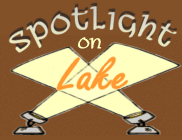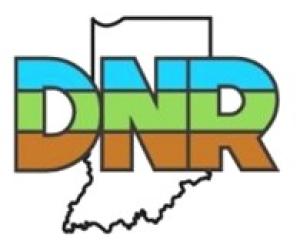
Wild Bulletin
The inside scoop on what's outside
July 2023
Sun's out, fun's out: Your next outdoor adventure starts now
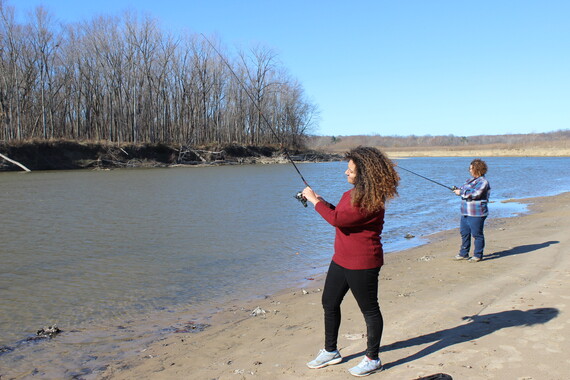
Explore the outdoors: Camp + fish
Camping days are here, and whether you’ll be spending the weekend sleeping under the stars or inside a cabin, remember to pack your fishing pole. You can throw a line out into the waters near you and relax with family and friends. Just don’t forget to bring your fishing license.
If you’re still searching for that perfect camping spot, be sure to check out our Recreation Guide to find a DNR location that has everything you need for the best trip of the summer.

IPLA joining reserved hunts program
Heads up, hunters. The Indiana Private Lands Access (IPLA) program has switched to the reserved hunt system, meaning you can no longer apply for that program’s hunts through the self-service sign-in system. IPLA hunt applications and information can now be found on the reserved hunt webpage.
Properties from various agencies participate in reserved hunts, including Indiana DNR Fish & Wildlife areas (FWA), State Parks, National Wildlife Refuges (NWR), and private lands.
The reserved hunt application window spans from July 2—Aug. 6 for various species:
- Dove
- Squirrel
- Teal and Early Goose
- Deer: archery
- Deer: primitive muzzleloader (NWR hunts)
- Deer: firearms (NWR & FWA hunts)
- Deer: youth (NWR hunts)
Keep in mind that participating areas are managed by various agencies and may have unique restrictions that each hunter must follow. Visit the reserved hunt webpage to learn more about draw hunts and how to apply. Be sure to subscribe to stay up to date on future reserved hunting opportunities.

License to Thrill: Buy your fall hunting licenses now
As we head into month 007, remember that all fall hunting license types are available for purchase. If you’re looking for a deer or turkey license, now is a handy time to buy it. With plenty of license options available for residents and nonresidents, we’ve got the perfect outdoor adventure for you.
Spend some time this fall bonding with your friends and family and helping DNR’s efforts to conserve Indiana’s natural resources.
![]()
An all-new DNR app awaits
Out with the old, in with the new! Our upgraded, free DNR smartphone app is now available to guide you to the best places for outdoor exploration in Indiana. View the nearest State Parks, Fish & Wildlife areas, State Forests, Archery & Shooting Ranges, Nature Preserves, and more.
With a fresh interface, better maps, and more content, you’ll be the most prepared explorer in the wild. DNR app-reciates you!
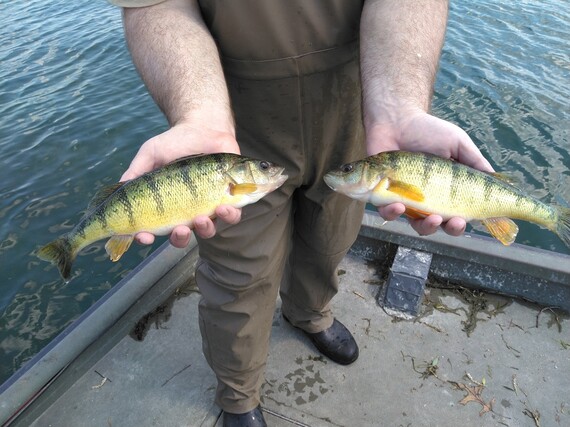
The search for perch: The wait is over!
Are you ready, anglers? Now is the time to catch yellow perch. In early spring, yellow perch move into deeper water to spawn, but they return to shallow waters near the end of June.
After spawning, the perch will be hungry, so now is the perfect time to grab your reel and head out on the water. We recommend using live minnows to catch the biggest perch, but shrimp, soft plastics, and even small crankbaits will do the trick. Hot tip: Try fishing in steady water with temperatures between 60-70 degrees. Near Lake Michigan? Michigan City has some of the most consistent summer perch bite and catch rates in the state—so what are you waiting for?

1, 2, 3: How many turkeys do you see?
DNR is counting on you to participate in our Turkey Brood Count this summer. Now that turkey chicks (poults) have hatched in Indiana, DNR needs your help counting turkey broods (hens with poults) and hens without poults. Brood reports have been collected since 1993 to calculate the annual Wild Turkey Production Index, which is used to inform biologists about population status and guide wildlife management for the species.
In 2022, DNR received more than 3,200 reports across all 92 counties in Indiana, and we’re hoping for even more this year. Our goal is to receive 3,000 total observations with at least 25 per county.
Share your 2023 observations with us online from now until Aug. 31. Recording observations takes less than five minutes, and no password is required.
We appreciate your reports!

Beat the heat: Go fishing
If you’re wondering what the summer heat means for your upcoming fishing opportunities, we’re here to help.
The best rule of thumb for summer fishing is to fish at dusk and dawn when the temperatures are cool and the UV rays are less intense. Fish the shallows, as the bigger predatory fish will swim there to eat before the UV index increases. Fishing topwater lures in the shallow water an hour or two before and after sunrise and sunset can be some of the best fishing you’ll do all year.
Still want to fish during the middle of the day? Focus your attention on deeper waters near structures. Keep in mind that water in most lakes and reservoirs stratifies by density layers during the hottest months. Water turns cooler the deeper you go, and fish will seek the temperature of water most comfortable for them. Try fishing different depths: start shallow and increase the depth you’re fishing until you start getting bites.
Need some help with packing your tacklebox for the summer? Check out our tips.

Picture courtesy of USGS.
Help us study Blotchy Bass Syndrome
Blotchy Bass Syndrome (BBS) is the occurrence of black inklike spots on the skin, fins, and/or mouths of freshwater bass species. These black spots of extra pigmentation may also be referred to as hyperpigmentation or melanosis. The first documented observation of BBS occurred in the early 1980s on largemouth and smallmouth bass. Researchers once thought that melanosis was caused by sun exposure or stress related to fishing, temperature, or pollution; however, researchers recently discovered that a family of viruses was associated with the black spots in fish that were in poor body condition.
The Division of Fish & Wildlife is partnering with researchers at the United States Geological Survey (USGS) to collect samples from black bass species to test for the prevalence and distribution of BBS, and we need your help. DNR encourages you to report observations of bass (blotchy or not) when you are fishing, so we can learn about the geographical extent, seasonality, prevalence, and biological threat of this family of viruses to black bass.
How to participate:
- Download the MyCatch app from Angler’s Atlas.
- Register for the “Blotchy Bass Bonanza.”
- While fishing, take photos of all the bass you catch (preferably on a measuring board) and upload them to the MyCatch app.
The Blotchy Bass Bonanza runs until Feb. 29, 2024. The Indiana DNR is not associated with the MyCatch app or the Blotchy Bass Bonanza event.

Behold! The Atlas of Breeding Birds of Indiana, 2005-2011
The latest Breeding Bird Atlas is available. The Division of Fish & Wildlife thanks all atlas participants for their hard work and patience as we worked together to complete this multi-year feat.
The 2005-2011 Atlas of Breeding Birds of Indiana is essential to conservation efforts, as it provides information on breeding occurrences and habitats of rare birds. Not only does it identify new habitat locations for our state’s birds, but it also provides baseline data that can be used for studies on future populations.
Add some color to your day by browsing through the atlas and its beautiful photos of the native birds of Indiana.
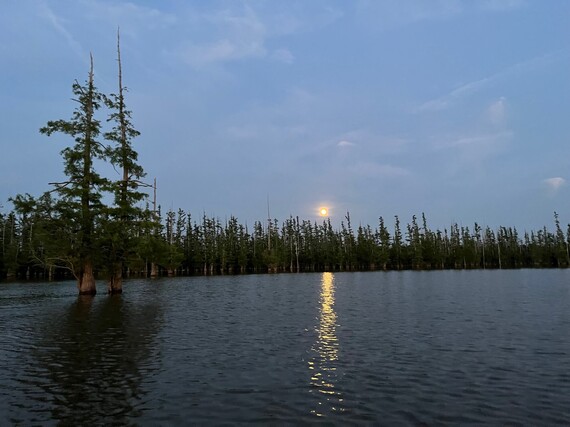
Wade through the waters during Lake Appreciation Month
July is Lake Appreciation Month, and we’re hosting an event that may make you starry-eyed. On July 29, join us for a Moonlight Paddle on Hovey Lake at Hovey Lake Fish & Wildlife Area. While an experienced guide leads you through the waters, you can learn more about local nighttime nature and the night sky. The Hovey Lake tour starts in the twilight of the setting sun and ends under the glow of the bright, nearly super moon, from 8 – 9:30 p.m. CT.
While Hovey Lake offers an easy paddling experience, participants must be at least 10 years old to participate. Bring your own paddle craft, life vest, and flashlight, and wear adequate clothing for the night’s weather. Interested in attending, but don’t have a vessel, or have other questions? Follow the link for contact information and more event details.

Conservation Conversations: The 2025 State Wildlife Action Plan revision process
What do you call a group of people coming together to talk and think while using way too many colored index cards? Collaborative conservation planning.
In June, the process for the 2025 revision of the Indiana State Wildlife Action Plan (SWAP) began, starting with a regional meeting in the southwestern part of the state.
Every 10 years, the SWAP is revised to develop priorities and actionable steps for Indiana conservation. Of course, we can’t lead this work without your help—our new revision process invites local partners to co-create a regional plan for the six SWAP regions of the state while focusing on plants, wildlife, fish, and people.
Thank you to our partners who attended. Want to learn more about the SWAP or participate in an upcoming workshop? Contact Elizabeth Mabee at emabee@dnr.IN.gov.
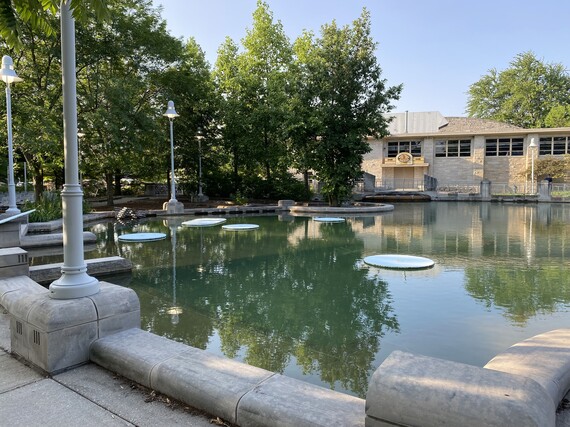
Plan your State Fair experience
The Indiana State Fair begins July 28, and it’s never too early to start planning to make sure you don’t miss out on the exciting events happening at the DNR building.
Not only will we have the Fishin’ Pond for kids age 5-17, but we will also host other engaging programs. From live demonstrations of scuba diving and kayak fishing to showing reptiles and birds of prey, we’ll have great learning opportunities for Hoosiers of all ages.
If you’re a new hunter or angler, we’ll share presentations covering squirrel hunting tips and tricks as well as responsible angling practices. Be sure to check out the events calendar to plan your visit.

What’s in the water: Establishment of native vegetation at Kokomo Reservoir
Last July, DNR fisheries biologists partnered with Indiana American Water to establish native aquatic vegetation in Kokomo Reservoir. With a goal of establishing self-sustaining populations of native spatterdock (Nuphar advena) and water lily (Nymphaea odorata), biologists worked to evaluate their growth over time and were encouraged by the vegetation’s survival and development last year.
Aquatic vegetation provides beneficial habitat to many different fish species. Because of the preliminary success of this habitat improvement project, more efforts to install additional vegetative habitat in reservoirs are underway.
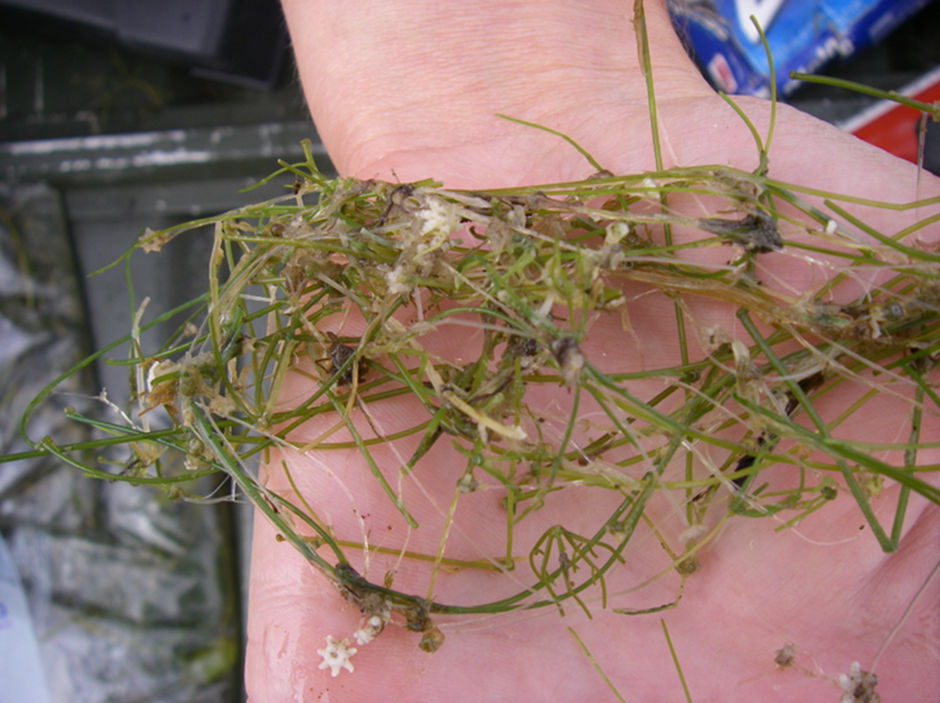
Join the fight: Help stop aquatic invasive species
Did you know that Indiana’s waterways can be altered by the presence of aquatic invasive species? Non-native plants, animals, and organisms can disrupt bodies of water and ecosystems, threatening sport fisheries and other commercial resources.
If you’re wondering what you can do to help prevent the spread of aquatic invasive species, there are many easy steps that Hoosiers and out-of-state visitors can take to stop aquatic hitchhikers:
- Clean off any animals, plants, and mud from any angling or boating gear.
- Drain the water from watercrafts, bladder tanks, bilges, motors, livewells, and portable bait containers before leaving the water access area.
- Make sure everything air-dries for five days or longer or is dried with a towel.
- Dispose of any unwanted or unused bait, fish parts, and packing materials in the trash, rather than on the ground or in water. Remember, littering harms the environment.
DNR is counting on you to help protect Indiana’s waterways and species.
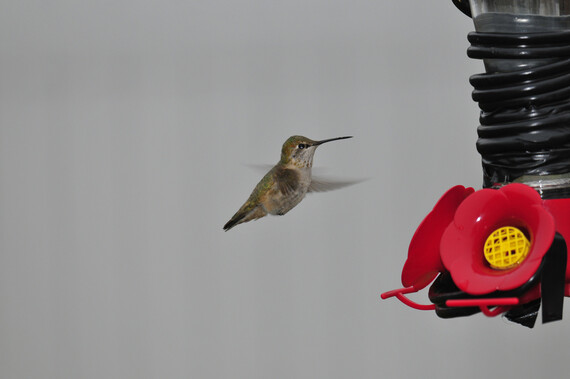
Hygiene for hummingbirds
During the summer, the warm weather along with the sugar solution in hummingbird feeders can cause bacteria to grow in bird feeders. This may make hummingbirds sick and cause them to avoid your feeders altogether. To keep your favorite hummingbirds coming back, rinse out and replace the sugar solution in your feeder every two to three days. Use warm water or a weak vinegar solution to rinse the feeder. Dish soap can leave residue in the feeder that can harm the hummingbirds or keep them from coming back.
Find our favorite tips and tricks for feeder maintenance on The National Audubon Society’s FAQs page.
Recent news releases
Reserved hunt applications open
Share your observations of wild turkey hens and their young with DNR
New free DNR smartphone app available
Upcoming events
- July 15 – Guided Hike: Pisgah Marsh Nature Preserve, Kosciusko County
- July 15 – Kayak Outing, Goose Pond FWA
- July 18 – Become a Bat Master!, Virtual
- July 26 – Dove Banding Day, Goose Pond FWA
- July 29 – Moonlight Paddle, Hovey Lake FWA
- Aug. 7 – Hoosier Riverwatch Training, Michigan City
- Aug. 26 – Guided Hike: Hoosier Prairie Nature Preserve
- 2024: April 8 – Total Solar Eclipse, State of Indiana
More
- Buy a license
- Hunting information
- Where to Hunt
- Fishing information
- Where to Fish
- Fish & Wildlife properties

The Indiana Natural Resources Foundation celebrates and preserves Indiana’s natural legacy by raising funds to support the Indiana Department of Natural Resources (DNR) and its programs. Together, we have helped expand public lands, restore wildlife habitat, and create outdoor educational and recreational opportunities for Hoosiers.
About Fish and Wildlife Management in Indiana
Fish and wildlife management and public access are funded by fishing and hunting license revenue and also through the Wildlife and Sport Fish Restoration Programs administered by the U.S. Fish & Wildlife Service. These programs collect excise taxes on sporting arms and ammunition, archery equipment, fishing equipment, and motor boat fuels. The money is distributed among state fish and wildlife agencies based on land size and the number of licensed anglers and hunters in each state. Find out more information about fish and wildlife management in Indiana at Wildlife.IN.gov.
